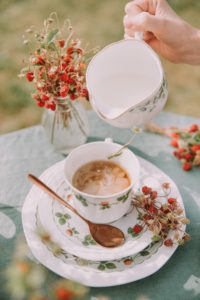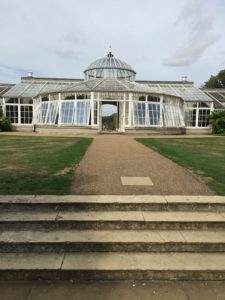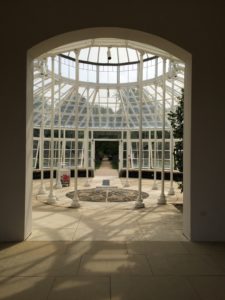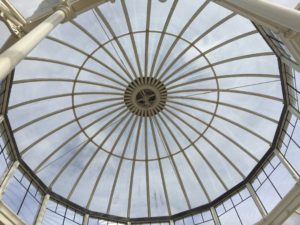 I said I’d tell you more about the places that inspired the short stories in my collection. Over several years, I wrote the stories on location in various places, mainly in London, including Greenwich Park, the Tate Gallery, outside the Roman Amphitheatre and in a café near the smallest house in London. I ended up with a set of intriguing characters – such as woman conceived in a marmalade factory, a girl who finds true love (and a bed for the night) over a card game called Scrummage, and a professional picnicker who finds love because of a blue plastic bag.
I said I’d tell you more about the places that inspired the short stories in my collection. Over several years, I wrote the stories on location in various places, mainly in London, including Greenwich Park, the Tate Gallery, outside the Roman Amphitheatre and in a café near the smallest house in London. I ended up with a set of intriguing characters – such as woman conceived in a marmalade factory, a girl who finds true love (and a bed for the night) over a card game called Scrummage, and a professional picnicker who finds love because of a blue plastic bag.
If you downloaded the free short story, you might have noticed that tea is a theme that runs through my stories. I don’t know about you but I find it hard to wake up in the morning without a cup of tea. Because our son used to wake us up at 5am, we got into getting up that early (as much as you ever do) so after I read Miracle Morning by Hal Elrod I decided to aim to do two hours in the morning before the house is properly awake. I don’t always manage it, but when I do, I need a cup of tea by my side.
The same thing happened when I was writing the short stories that make up my new collection Unusual Places. I often wrote the first draft on location, and I needed my tea. Sometimes I wrote in a café, with a pot of tea, which was even better. PG Tips or Yorkshire Tea would be my usual, although I do like a nice English Breakfast, and I’m also partial to Lapsang Souchong – what I used to call ‘bonfire tea’ when I was a kid.
As well as tea, I love dilapidated buildings, or ugly buildings, or buildings that have something quirky about them. I used one in both of my novels – the first was a half-demolished hotel in Bournemouth called The Water’s Edge, on the South coast of England, the second was an ex-home for unmarried mothers in Ely, Cambridgeshire. So, three things that power my writing are: tea, writing on location, and dilapidated buildings.
And that brings me to unusual place number two: the glasshouse in Chiswick Gardens. If you go and see it now, it won’t look like it did when I wrote the story ‘The Marmalade Factory’ outside it. The Victorian glasshouse has been restored, which is a good thing for visitors to the gardens and for the camellias it houses, but it could have been disastrous for my writing process if I had turned up after the restoration instead of beforehand. A run down Victorian glasshouse was wonderful for inspiration for me because I felt I could turn it into anything I wanted.
You might have heard of the old adage ‘write what you know’. I did that in The Water’s Edge, because I wrote about a family-run hotel, and I grew up in a set of rather down-at-heel (I think it’s fair to say) self-catering holiday flatlets run by my parents. But of course writers need to add the ‘secret spice’ provided by ‘What if?’ I didn’t write about the real Water’s Edge Hotel or the holiday flatlets we lived in – I added ‘What if a young girl’s mother died so she had to go and live in a ramshackle hotel in Bournemouth?’ and ‘What if Persephone returned from Hades every year right next to one of Bournemouth’s piers?’ But when it came to the glasshouse in the Chiswick gardens, I knew nothing about it. I could only write what I saw – and it was a particular ‘What if?’ that brought the glasshouse to life for me – and that ‘What if?’ was cheese.

I had recently been on the Cheddar Gorge experience in Somerset. Yes, the place where the cheese comes from. The experience itself is, well, a bit cheesy. After I’d been to the Grand Canyon and Yosemite National Park, the Gorge itself, although very British, felt less impressive. But I am a BIG fan of cheese. This was a few years ago, so I don’t know if they still do this, but at the time they had used the characters from Aardman Animation’s ‘Wallace and Gromit’ to guide visitors through the experience. You got to watch through large glass windows as people in white coats and hats made the cheese. All of which made me wonder, how do those people feel, with tourists looking in at them? What would it be like to be inside a factory made of glass?


 Adding the marmalade
Adding the marmaladeThe Chiswick glasshouse reminded me of the Wallace and Gromit tour of the Cheddar Cheese factory, so I thought: What if I turned it into a glass factory? And because it was going to be a factory, I needed something I knew how to make. Another one of my loves is marmalade. To be frank, I’d be happy with a nice book, a comfy chair, a cup of tea and a marmalade sandwich, and I also love making marmalade. So there you go: that’s how I came to create a story about a marmalade factory outside a dilapidated glasshouse in Chiswick Gardens.
You can check out the next unusual place in the series here.
You can see a list of all the posts in this series.